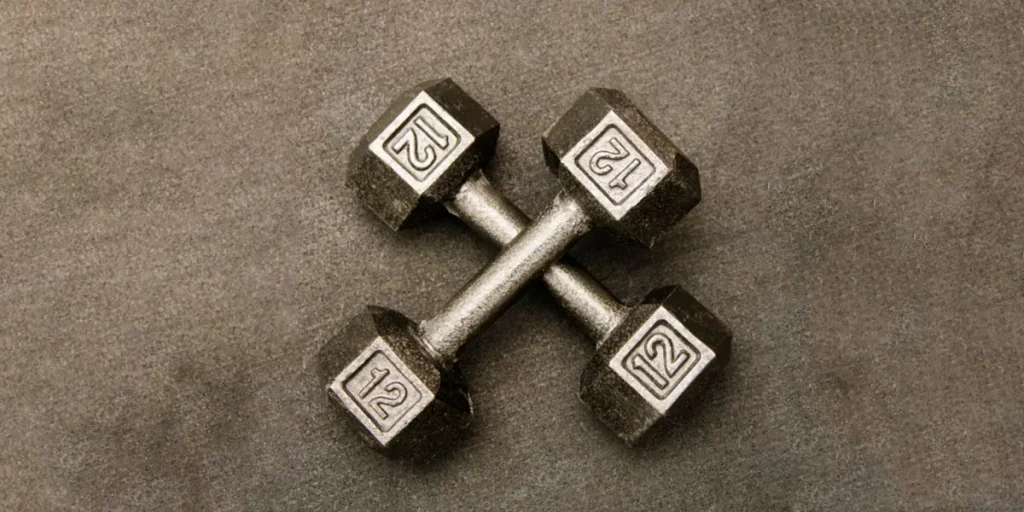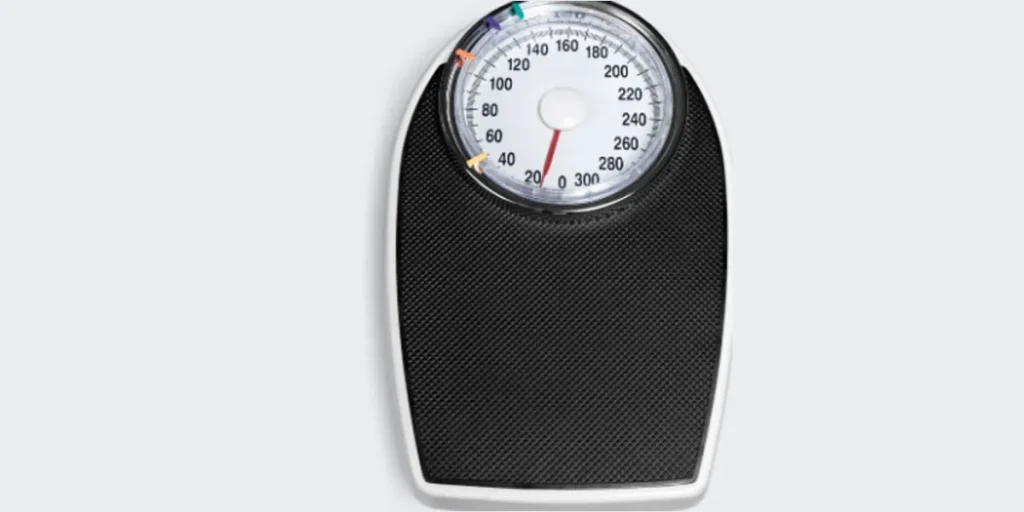A pound is a unit of weight equivalent to 16 ounces or 0.45359237 kilograms. It is a standard measurement used in the United States and other countries still on the imperial system.
Understanding the weight of a pound is critical for a variety of tasks, from grocery shopping to shipping parcels, and even in personal weight management.
As a versatile unit, a pound covers a broad spectrum of uses in daily life. It’s essential for industries to calibrate their scales, for chefs to perfect their recipes, and for athletes to measure their weights.
The significance of a pound stretches across various fields including culinary arts, science, and commerce, making it a fundamental knowledge for both businesses and individuals.
Knowing the precise conversion of a pound is invaluable for anyone engaged in activities that require accurate weight measurements.

History Of The Pound
Weighing objects is a practice as old as civilization itself. The pound has a rich history tied to trade and commerce. Let’s explore how the pound started and changed over time.
Origins In Ancient Weights
The concept of “pound” originated in ancient times. It began as a unit of weight measured against seeds and grains. Merchants and traders needed a standard way to compare goods.
- Romans used a pound called “libra,” which equated to roughly 328.9 grams.
- Charlemagne standardized weights, making trade fairer across his kingdom.
Evolution Through The Centuries
As trade expanded, so did the need for weight standardization. The pound evolved through time, influenced by different societies.
| Era | Weight System | Pound Equivalent |
|---|---|---|
| 8th Century | Charlemagne’s units | ~350 grams |
| 14th-16th Century | English wool pound | ~699 grams |
| Early Modern Era | Troy and Avoirdupois systems | ~373 grams and ~454 grams |
The pound has undergone significant changes, adapting to the needs of commerce and technology. This ensures that it remains relevant and practical for everyday use.
Pound Vs. Kilogram

Understanding weight starts with two basic units: the pound and the kilogram. While one finds its roots in the imperial system, the other stands as a pillar of the metric system.
Knowing the difference between a pound and a kilogram is essential in science, and daily life. So, let’s dive into the world where pounds and kilograms rule the scales.
Defining A Pound
A pound is a unit of weight commonly used in the United States. It’s abbreviated as ‘lb’. One pound equates to 16 ounces.
The pound has a long history and has been used for centuries to measure weight. It is still the go-to unit for many people when they weigh themselves or their produce at the grocery store.
International Kilogram
The kilogram, on the other hand, is accepted globally. Marked as ‘kg’, it is the base unit of mass in the International System of Units (SI).
The kilogram was once defined by a physical platinum-iridium cylinder but has since moved to a universal constant.
This change ensures accuracy and consistency in mass measurement around the world.
Conversion Factors
Converting between pounds and kilograms is simple if you remember the key factor: one kilogram equals 2.20462 pounds.
This means that to switch from pounds to kilograms, divide the weight by 2.20462. To convert kilograms back into pounds, multiply the kilogram weight by 2.20462.
| Pounds (lb) | Kilograms (kg) | Multiplication/Division Factor |
|---|---|---|
| 1 | 0.453592 | Divide by 2.20462 |
| 5 | 2.26796 | Divide by 2.20462 |
| 10 | 4.53592 | Divide by 2.20462 |
- Remember: Always use precise conversion factors for accurate results.
- The pound and the kilogram relate through multiplication or division, not addition or subtraction.
- Digital scales often offer a quick switch between pounds and kilograms.
Whether you’re cooking, shopping, or working out, a clear grasp of these two units and their conversion will make weight measurement a breeze.
Weight In Everyday Life

Understanding weight is part of daily routines. From buying fruits at the market to measuring ingredients for a recipe, the concept of weight underpins many everyday activities. A pound is a common unit used for these measurements.
Common Objects Weighing One Pound
Many everyday items tip the scales at approximately one pound. Recognizing these can provide a practical reference for envisioning this weight.
- A package of butter (four sticks)
- A loaf of bread
- A football
- About two medium-sized apples
Use Of Pounds In Commerce
The pound plays a vital role in business transactions. It sets clear standards for weights and measures in trade.
| Industry | Use of Pounds |
|---|---|
| Grocery | Prices per pound for produce, meats |
| Shipping | Costs based on package weight |
| Manufacturing | Materials bought and sold by pound |
| Pharmacy | Dosing based on patient weight in pounds |
Measuring Mass And Weight
Understanding how much things weigh is part of everyday life. When you hold a pound of apples, you might not think about the science behind it.
Yet, knowing about mass and weight is useful. Both are ways to measure how heavy something is.
They are not the same, though. This section will explain these concepts and how to measure them.
Tools For Weighing
There are many tools to find out how heavy things are. Below are common ones:
- Kitchen scales – perfect for cooking needs.
- Bathroom scales – for checking body weight.
- Postage scales – to weigh mail and small items.
- Industrial scales – for large or heavy objects.
These tools help us in daily tasks. From cooking to mailing letters, they ensure we have the right amounts.
Understanding Gravity’s Role
Gravity pulls everything towards the Earth’s center. This pull is why things have weight. Yet, mass stays the same everywhere.
Gravity can change based on where you are. The moon’s gravity is weaker, so things weigh less there. On Earth, we use pounds to talk about weight.
Mass is an object’s amount of matter. Scales measure this regardless of location. Weight changes with gravity, but mass does not. Knowing this helps us understand the pound as a weight unit.
Science Behind Weight
Understanding how heavy a pound is takes us deep into the territory of physics. Here, we peel back the layers of mystery surrounding weight.
What weighs a pound on Earth might be different elsewhere! Let’s dive into the fascinating science that defines the heaviness of objects.
Physics Of Mass And Force
Gravity pulls us towards Earth. This pull is a force. Imagine gravity as a magnet. The more massive an object, the stronger it attracts. A pound is how we measure this pull.
Mass refers to how much matter an object contains. Force, on the other hand, is the push or pull acting on it.
Together, they determine weight. It’s easy: mass times the pull of gravity equals weight. Remember this formula: Weight = Mass x Gravity.
| Mass | Force (Gravity) | Weight |
|---|---|---|
| 1 pound mass | 9.8 meters/second^2 | 1 pound weight |
Weight Variations With Altitude And Location
Weight changes with altitude and location! Climb a mountain, and you weigh less. Gravity decreases with height from Earth’s center, so weight drops a tiny bit.
- At sea level, gravity is strongest.
- Move up, and gravity weakens slightly.
- The farther from Earth’s center, the lighter you feel.
Different places, different weights. The Earth is not a perfect sphere. It bulges a bit at the equator. This shape means gravity is not the same everywhere.
Stand on the equator, and you’re a bit farther from the Earth’s core. You’re slightly lighter than at the poles!
Cultural Perspectives On Weight
The concept of weight holds varied significance across cultures, influencing language, literature, and daily life.
One pound, a measure so commonly used, embodies diverse meanings and evokes multiple interpretations beyond its physical measure.
This section delves into how different societies perceive and utilize the concept of weight.
Pound In Literature And Language
The pound’s impact on literature and language is profound. It appears in proverbs, storytelling, and everyday speech.
Phrases like “worth one’s weight in gold” highlight the importance. Classics use pounds to signify more than just weight.
They speak to value, burden, or even challenges. Shakespeare, Dickens, and modern authors all reference this unit. It’s a key part of their narratives.
Weight Measurement In Different Cultures
Different cultures have unique systems to measure weight. Here are a few:
- In Asia, the ‘catty’ and ‘tael’ were traditional.
- Ancient Egyptians used the ‘deben’.
- Romans measured in ‘libra’, which hints at the pound’s origin.
Today’s global society often balances between these local units and the widely known pound. Festivals, markets, and recipes still showcase traditional weights.
These glimpses into cultural norms demonstrate how deeply rooted the pound is in societies.
Exploring weight measurement across cultures offers a fascinating cultural journey through history and commerce.
FAQs About the Weight of a Pound
How Much Does 1 Pound Weigh In Kilograms?
One pound is equivalent to approximately 0. 453592 kilograms. This is a fixed conversion rate commonly used in metric conversions.
Can I Visualize The Weight Of A Pound?
Yes, a common way to visualize a pound is by picturing a medium-sized apple or a standard loaf of bread, which are close to one pound.
What Items Commonly Weigh About A Pound?
Common household items that weigh roughly a pound include a large book, a bottle of water, or a small melon. It’s a familiar reference weight for everyday objects.
Is A Pound Heavier Than A Liter Of Water?
No, a pound is not heavier than a liter of water. One liter of water weighs approximately 2. 2 pounds at room temperature.
Conclusion
Understanding the weight of a pound is fundamental in many aspects of life. From cooking to mailing packages, it’s a common unit.
It bridges daily activities and scientific calculations alike. Remember, a pound signifies more than just weight—it’s a key to precision in a world measured in ounces and grams.
Resources:
https://www.uu.edu/dept/physics/scienceguys/2004May.cfm
https://www.britannica.com/science/pound-unit-of-weight
